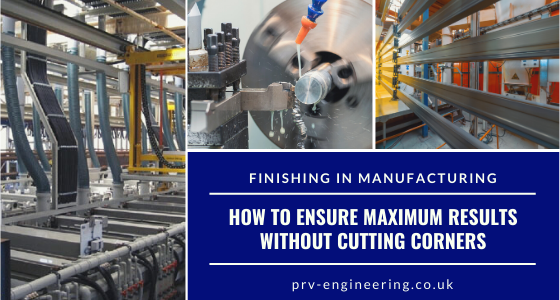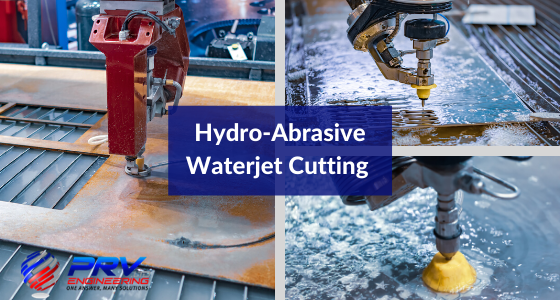The introduction of abrasive waterjet cutting into the manufacturing industry marked a pivotal advancement in how materials are processed. This technology, distinguished by its precision and efficiency, offers a non-thermal, water-driven method to cut a wide range of materials, from metals to composites, without altering their intrinsic properties.
Waterjet cutting has revolutionised the manufacturing industry, offering a myriad of advantages over traditional cutting methods. Among them, hydro-abrasive waterjet cutting stands out as a superior choice for a range of materials, including metal, stone, and glass. In this article, we take a look at the intricacies of this advanced technique, shedding light on its principles, advantages, applications, and comparisons with other cutting methods.
How Hydro-Abrasive Waterjet Cutting Compares to Traditional Methods
Hydro-abrasive waterjet cutting is a precision cutting technique that uses a high-pressure stream of water mixed with an abrasive substance to cut through materials. It is a versatile process that can be used to cut a wide range of materials, including metals, composites, glass, stone, and ceramics. In this article, we explore the advantages of this advanced process and some of its applications across various sectors.
CNC Waterjet cutting is a specialised manufacturing process that uses a high-pressure jet of water to cut or shape various types of materials. The power of the CNC waterjet cutting machine comes from a pressurising pump that uses a small precision nozzle. As the water exits the nozzle, it delivers a supersonic stream of water, about three times the speed of sound.
All materials can be cut by the same CNC Waterjet cutting machine, from soft rubber and plastics to the hardest metals and ceramics. This is hugely beneficial for companies who work within several sectors requiring different materials for various applications.
It offers customers a unique combination of flexibility, simplicity and precision unparalleled in other available technologies today. The small cutting widths and omni-directional cutting mean the machines can cut virtually any material with exceptionally high precision. Waterjet cutting offers extreme accuracy with tight tolerances and is especially suited to composites.
However, as good as waterjet cutting machines are, there are several misconceptions and PRV decided to set the record straight. Fact is, hydro-abrasive waterjet cutting has evolved remarkably and is one of the most effective machining methods today. This article aims at busting 8 common myths and shed some light on the services available at PRV Engineering.
Successful engineering companies use a combination of expert knowledge, experience and continuous investment in machinery and staff. Custom fabrication services require all of these elements and more as quality and production costs are the top priority. Custom fabrication is a specialist process whether you’re machining steel or aluminium.
Metal fabrication, for example, involves a wide range of skills and disciplines from profiling, bending and forming, cropping, welding to assembly and finishing. While technology, machinery and computer-aided design software have led to advanced custom fabrication services, there is still no substitute for experience.
Waterjet cutting is often used during the fabrication process of machine parts. This industrial tool is capable of cutting a wide variety of materials using a very high-pressure jet or stream of water. A mixture of water and an abrasive substance is also used in many applications. The highly versatile cutting method produces much less waste than other forms.
Waterjet cutting is also more environmentally friendly as it doesn’t produce dust, chippings or gas like other cutting methods. Engineering companies are implementing waterjet technology as a cost-effective, complementary machining method to cut parts to near-precise requirements. This greatly helps minimise waste, maximise raw material usage and accelerates overall production.











Recent Comments